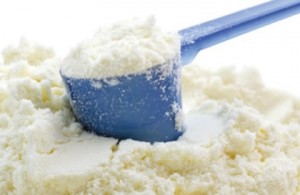Milk powder production to rise according to CoBank
 According to a new research report from CoBank U.S. producers of milk powder are set to bring significant amounts of new production capacity online over the next two years despite an ongoing global supply glut.
According to a new research report from CoBank U.S. producers of milk powder are set to bring significant amounts of new production capacity online over the next two years despite an ongoing global supply glut.
Despite a 30% reduction in milk prices since 2015, global milk production has continued to rise, with much of the surplus milk ending up as powder. This excess volume of powder, along with large inventories in the U.S. and New Zealand, has kept world milk powder prices low, with little hope of a meaningful recovery until at least 2017, according to CoBank.
“U.S. exporters will be up against robust competition and further challenged by a relatively strong U.S. dollar,” said Ben Laine, a senior economist with CoBank’s Knowledge Exchange Division. “Recovery could be slow as European Union stocks are returned to the market.”
However, in the face of this supply buildup and flagging prices, new projects are in the works that could add an estimated 440 million pounds per year of additional powder manufacturing capacity in the U.S. over the next two years.
“While this expansion may appear to be ill-timed in the current market environment, the longer term outlook paints a much different picture,” said Laine. “In the long run, emerging markets and a growing world population will enable U.S. dairy producers and processors to expand, especially if our powder industry competitively positions itself.”
The world population is expected to grow by more than one billion people by 2030 with most of that growth expected to occur in Africa and Asia, regions that are not particularly hospitable areas for milk production. The economic conditions in these areas, however, are said to be favourable for the consumption of dairy, a relatively inexpensive way to incorporate high-quality proteins into a diet. It is expected that an additional 145 billion pounds of milk will need to be sourced in these regions by 2020, with an even bigger increase required over the subsequent 20 years, notes the report.
U.S. producers have recognised this opportunity and are striving to become the suppliers of choice for milk powders in today’s global marketplace. In fact, nine U.S. manufacturers who represent more than half of the country’s skim milk powder (SMP) production have recently invested in or are currently investing in the ability to increase production while meeting the rigorous specifications put forth by global customers, according to the report.
To bolster their competitiveness in world markets, U.S. powder manufacturers will need to tailor and calibrate their output to meet global preferences and requirements, CoBank believes. New and upgraded facilities must be increasingly flexible and able to shift production between SMP, nonfat dry milk and whole milk powder. The new facilities also tend to be massive in processing capacity in order to realize larger economies of scale, thus lowering unit costs. Additionally, the ability to manufacture other milk-based ingredients such as lactose, casein, milk protein isolate, milk protein concentrate and others can diversify product offerings and improve margins.
“Dairy processors will need to be able to respond to shifts in the dynamics of component values and manufacture the most economically favourable product mix at the time,” said Laine.

































